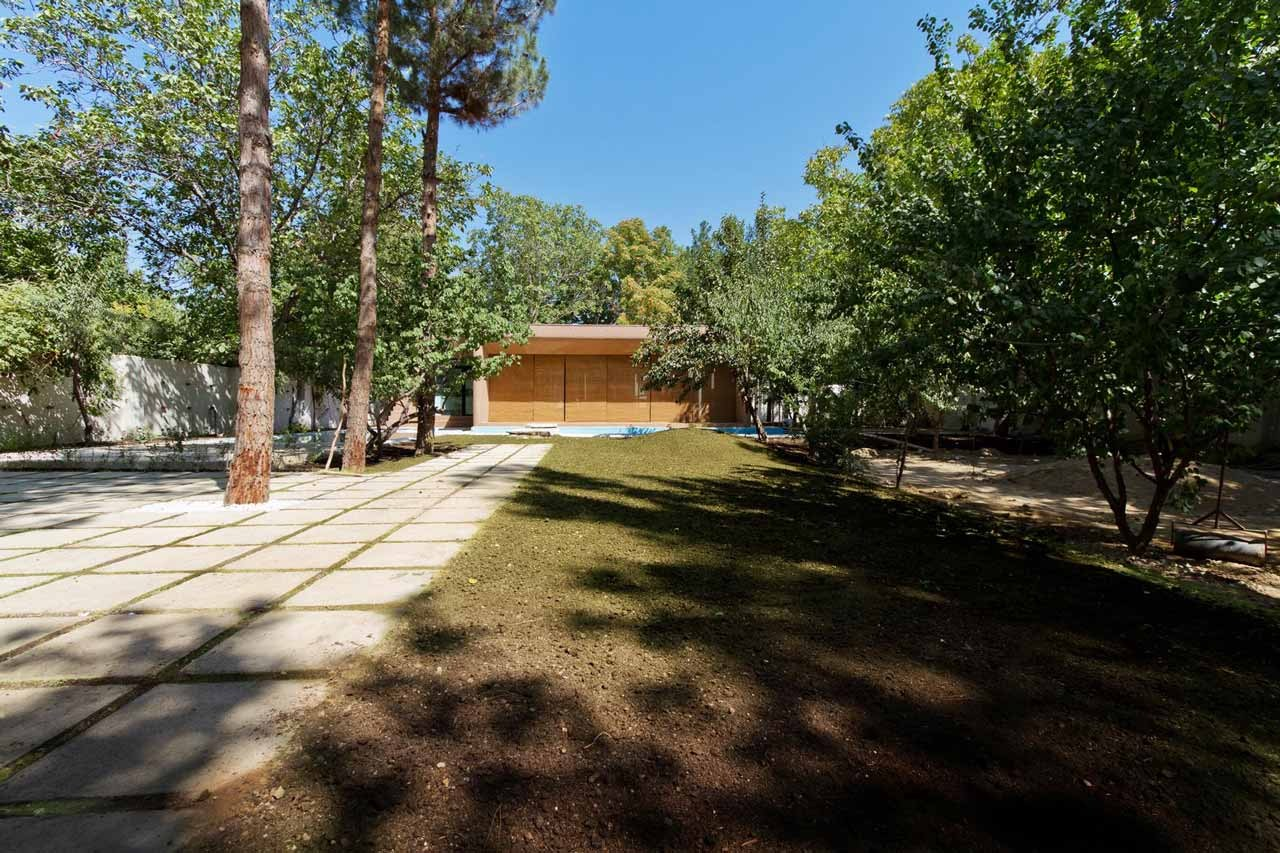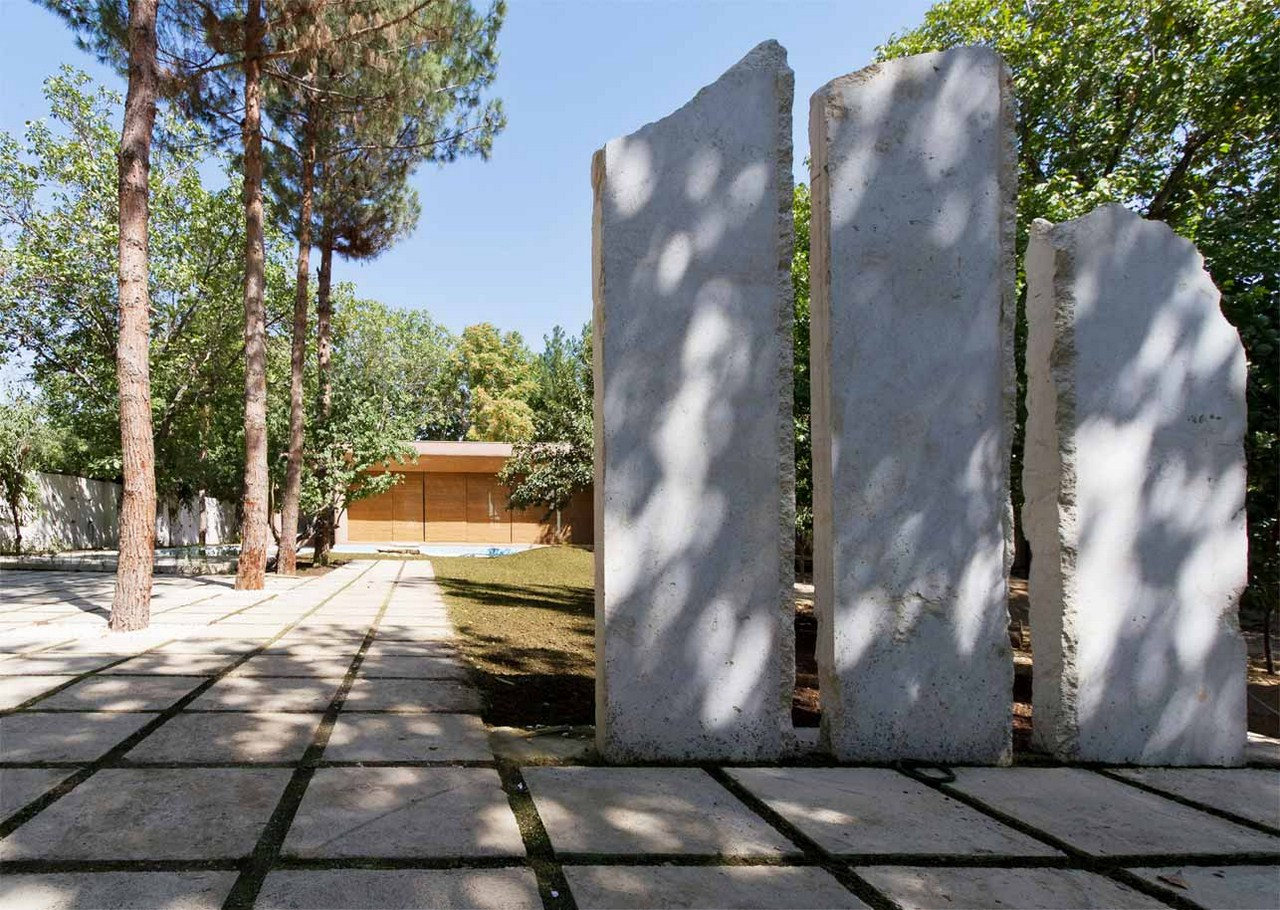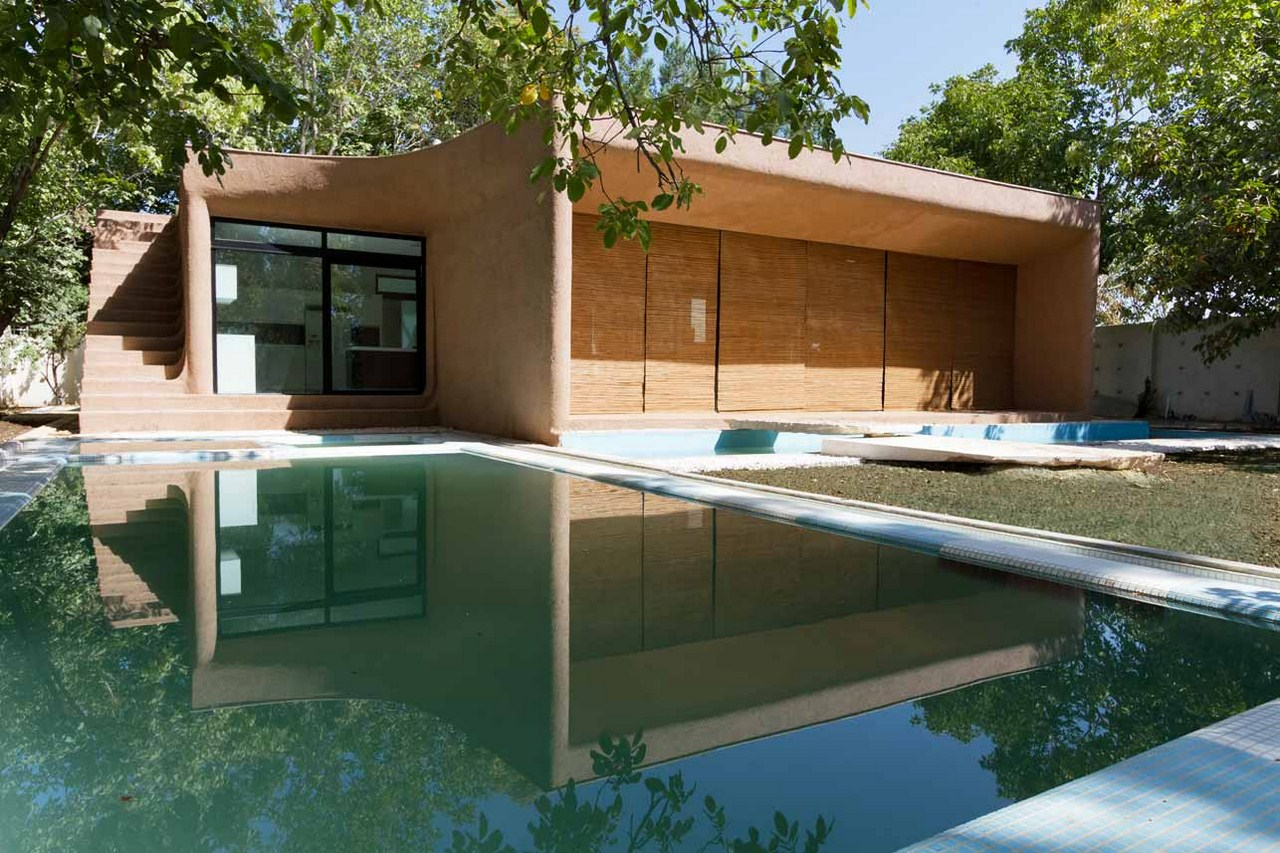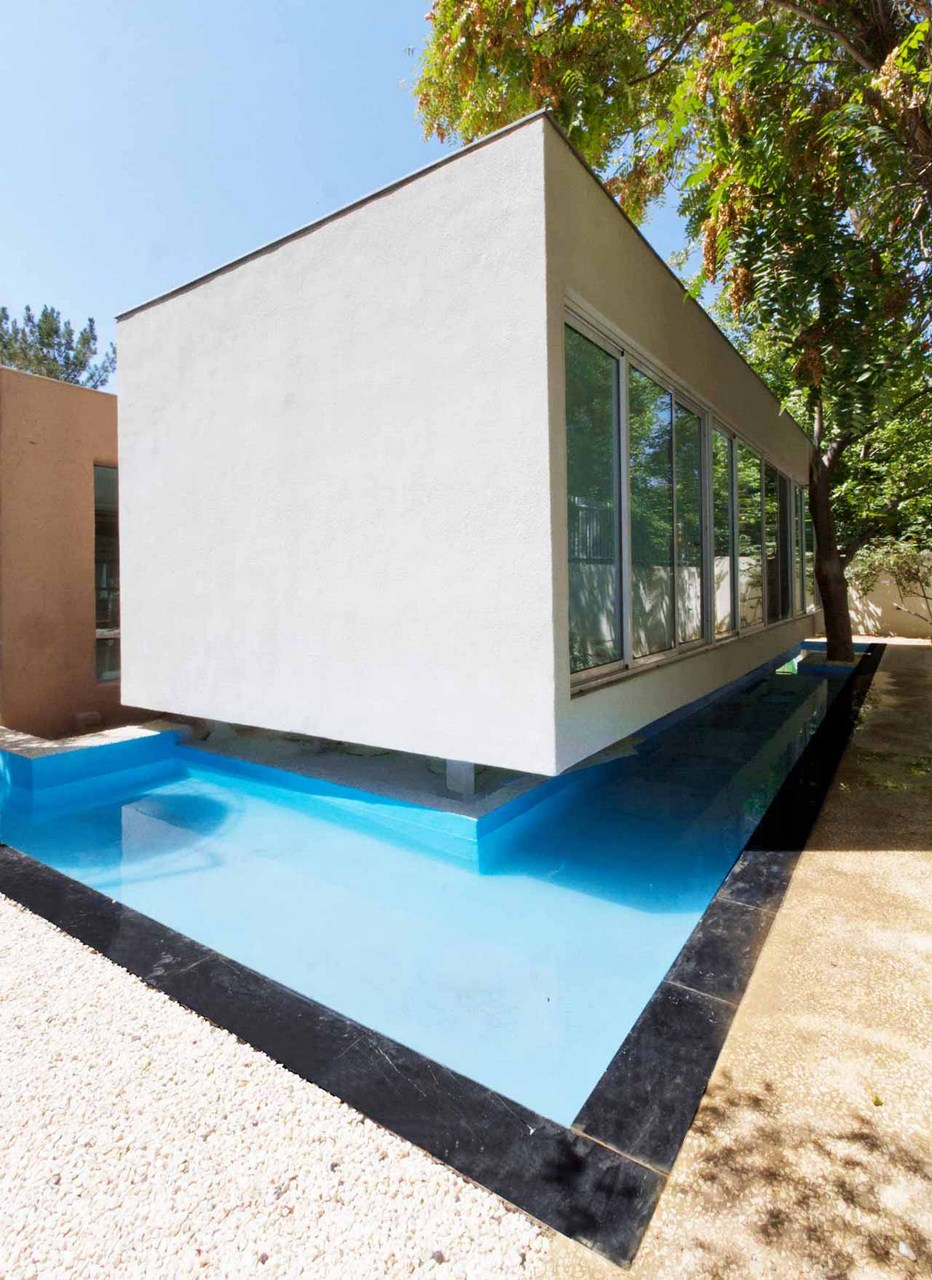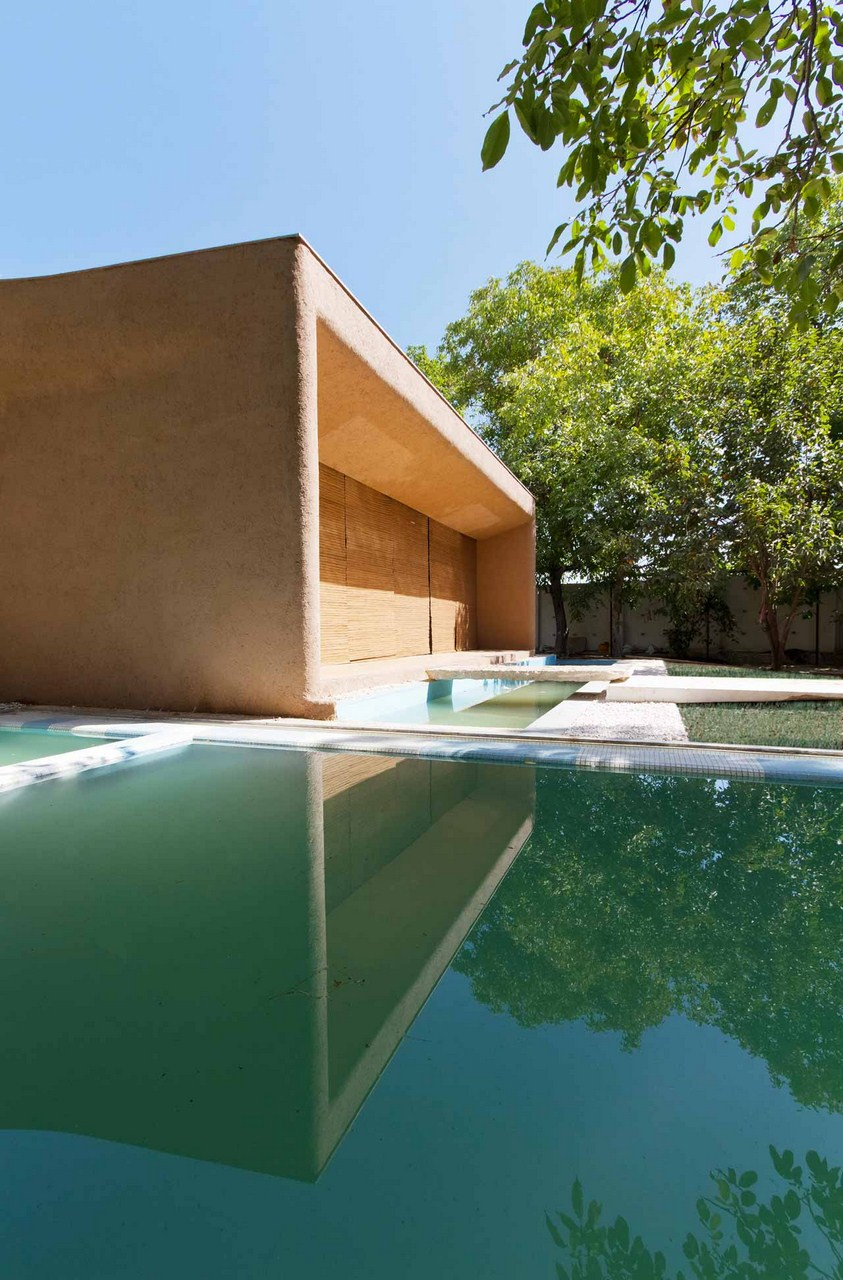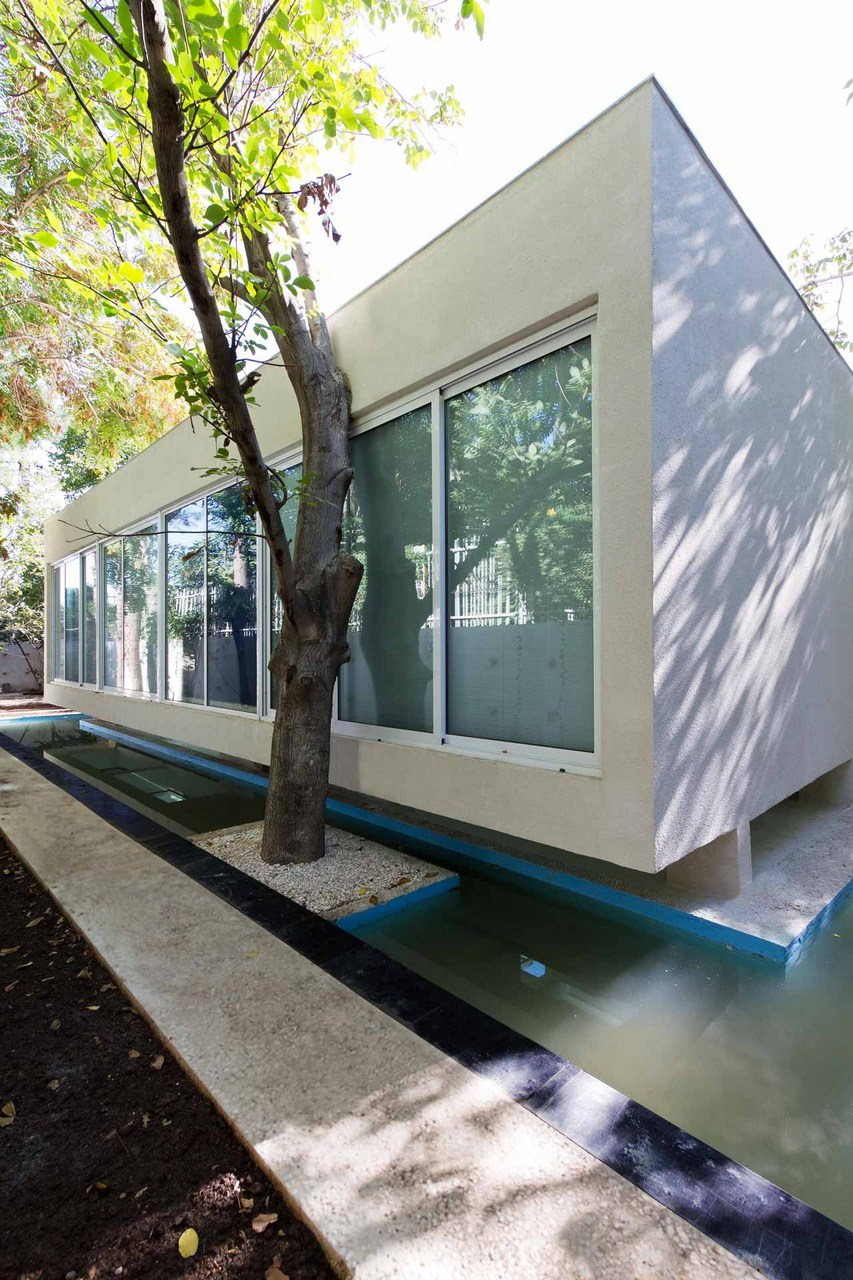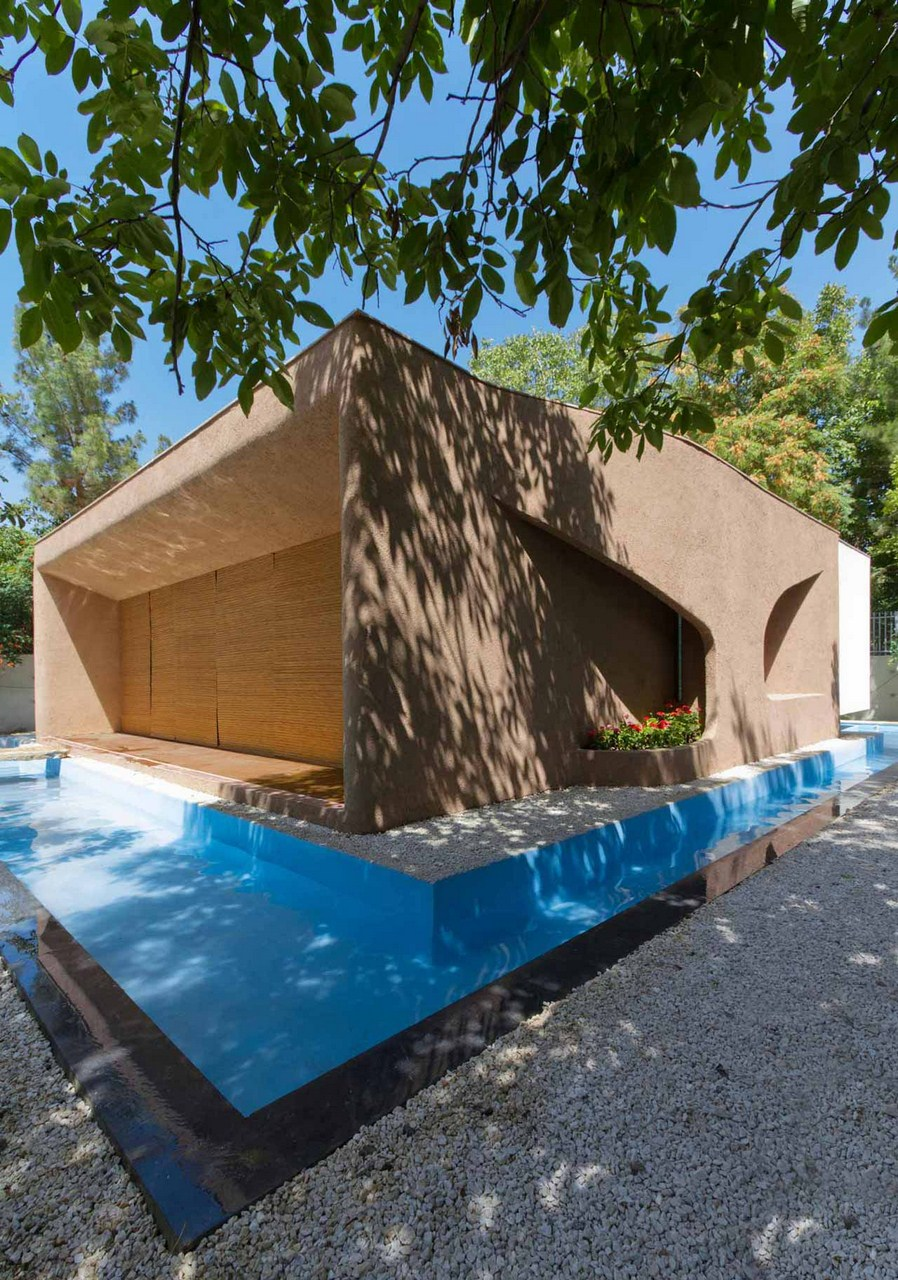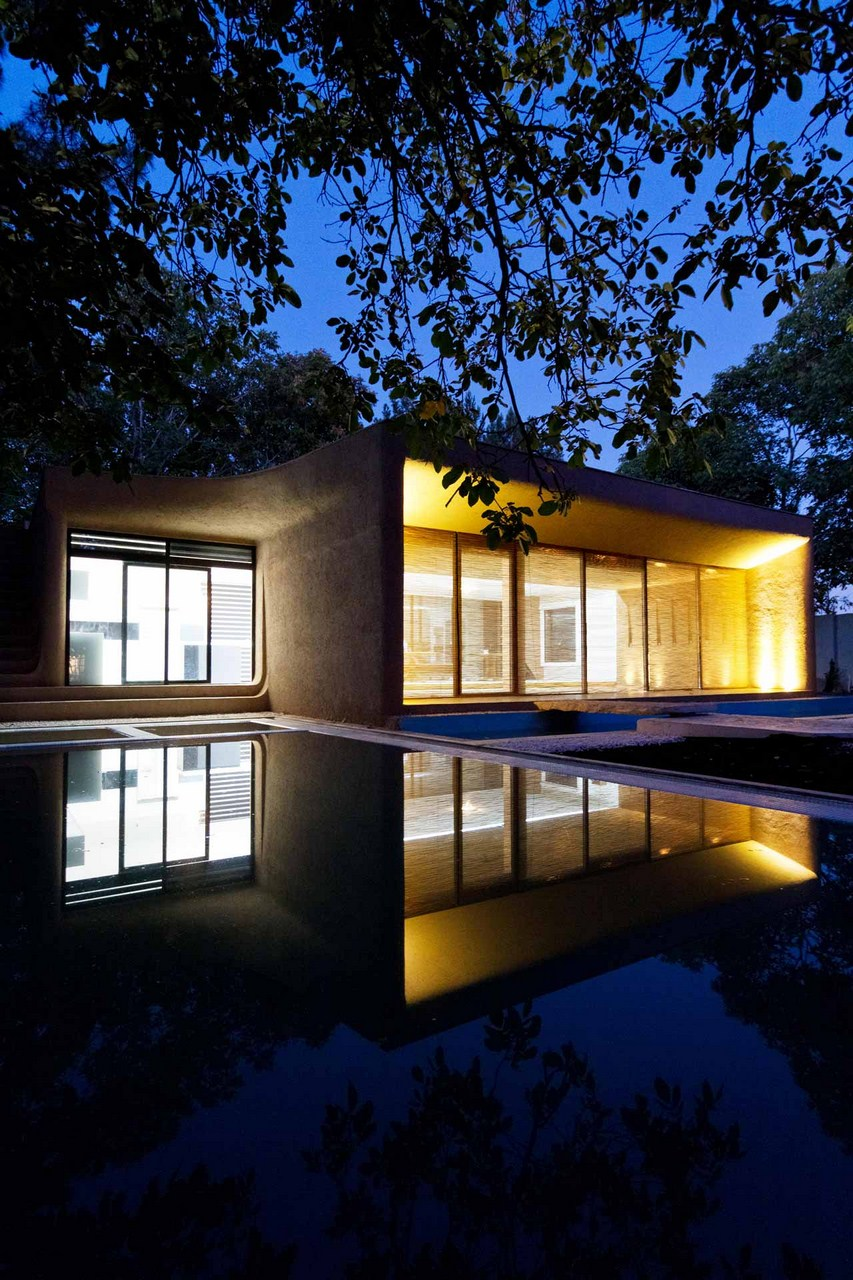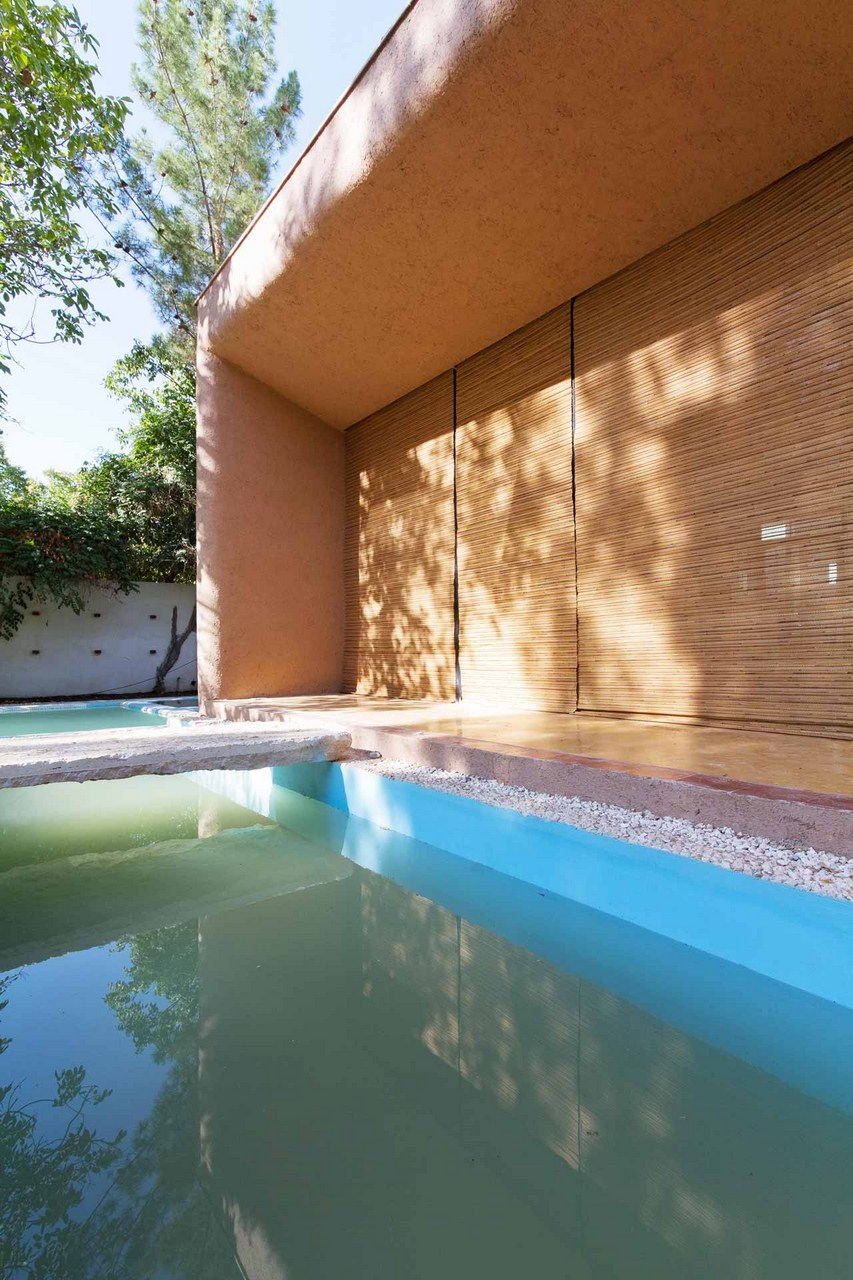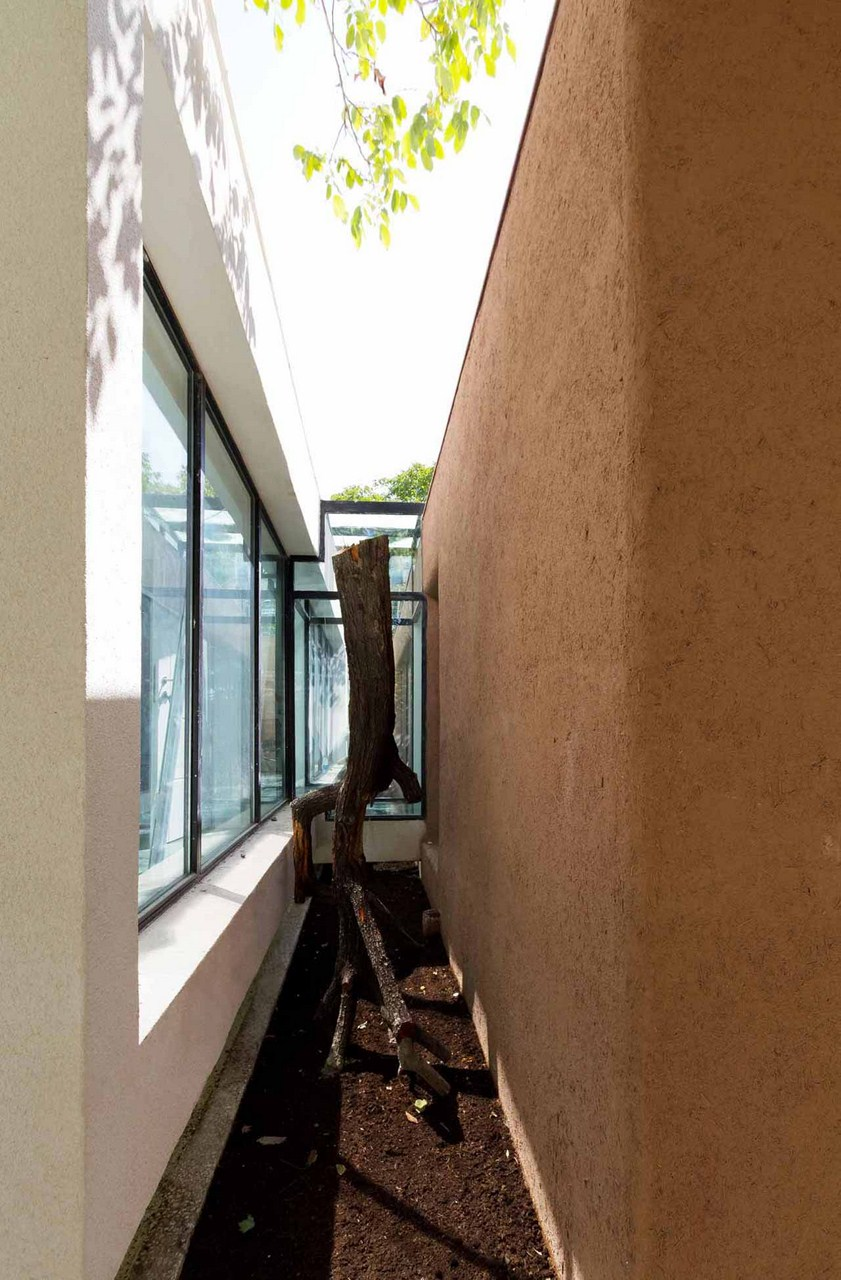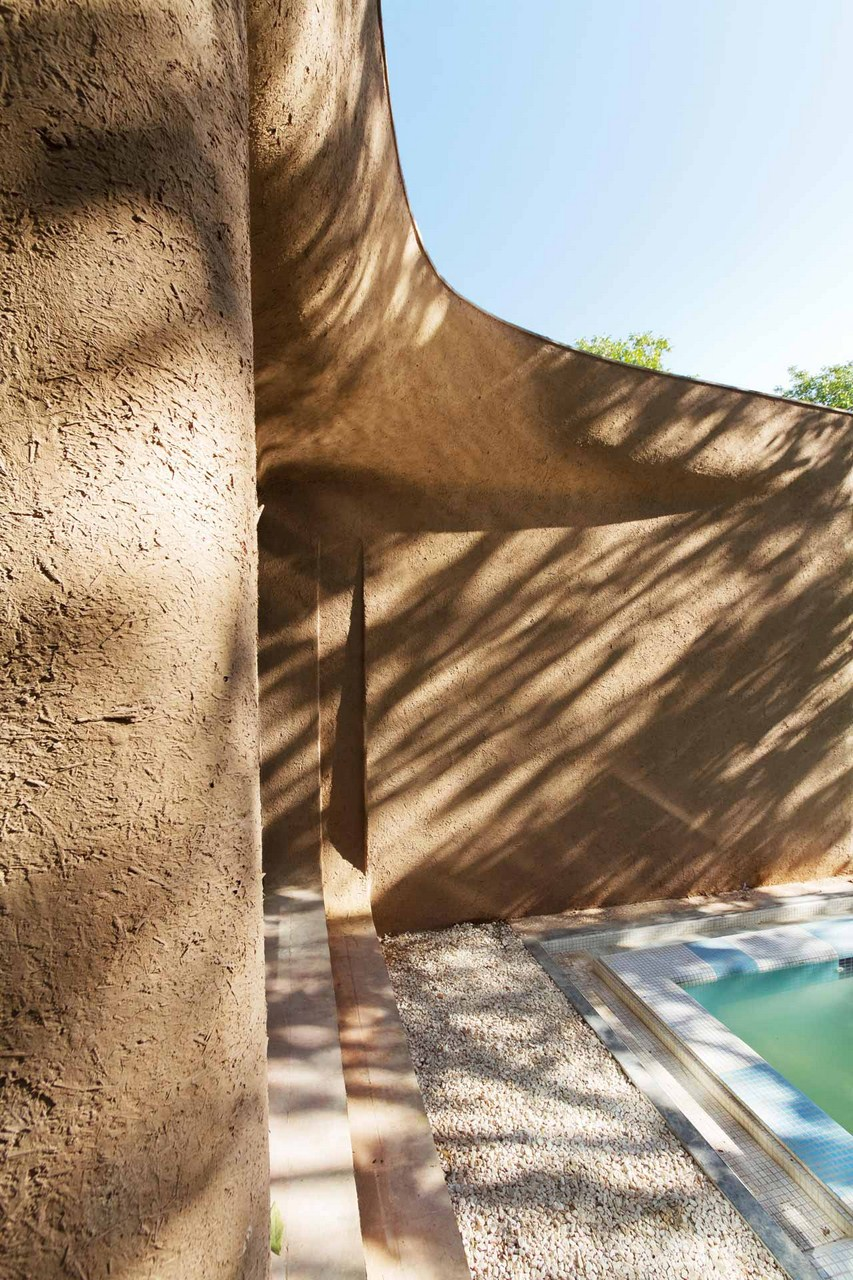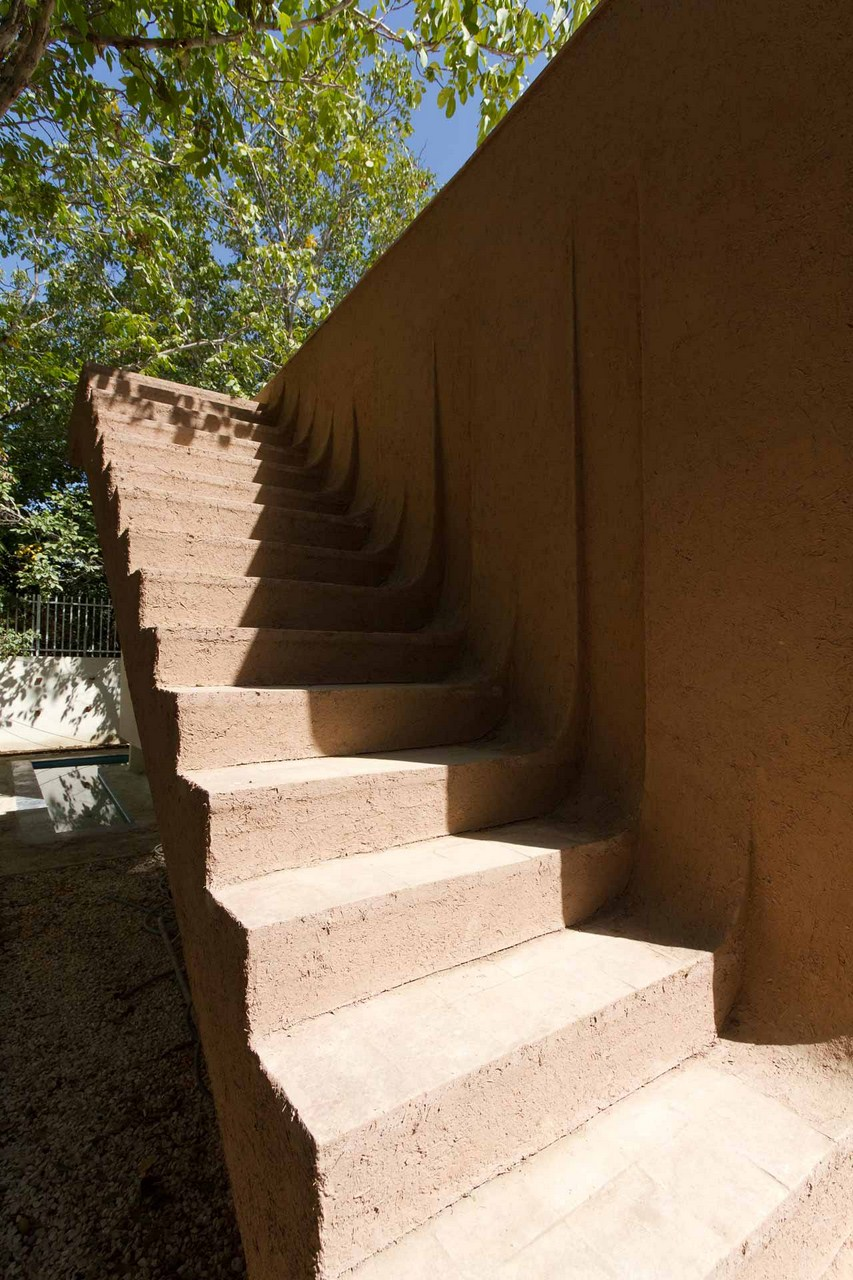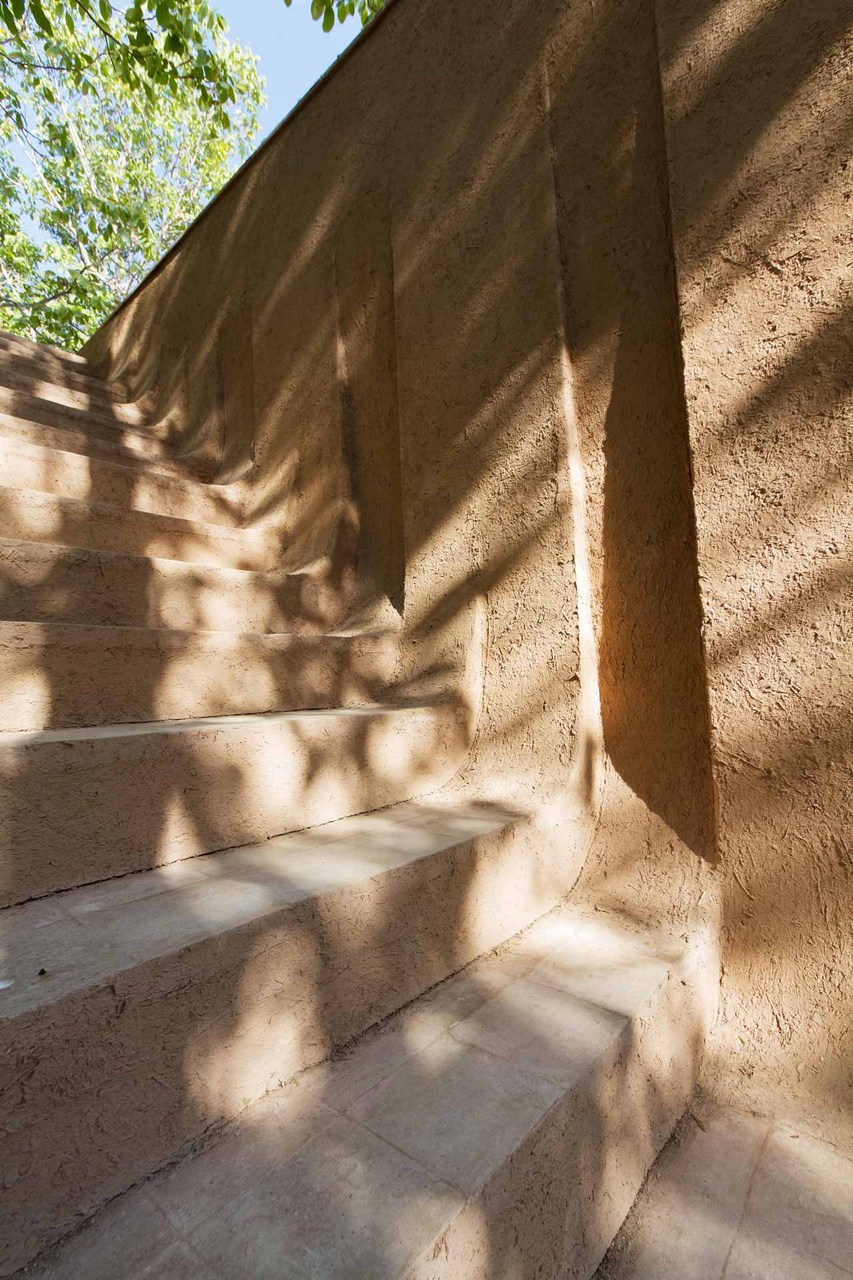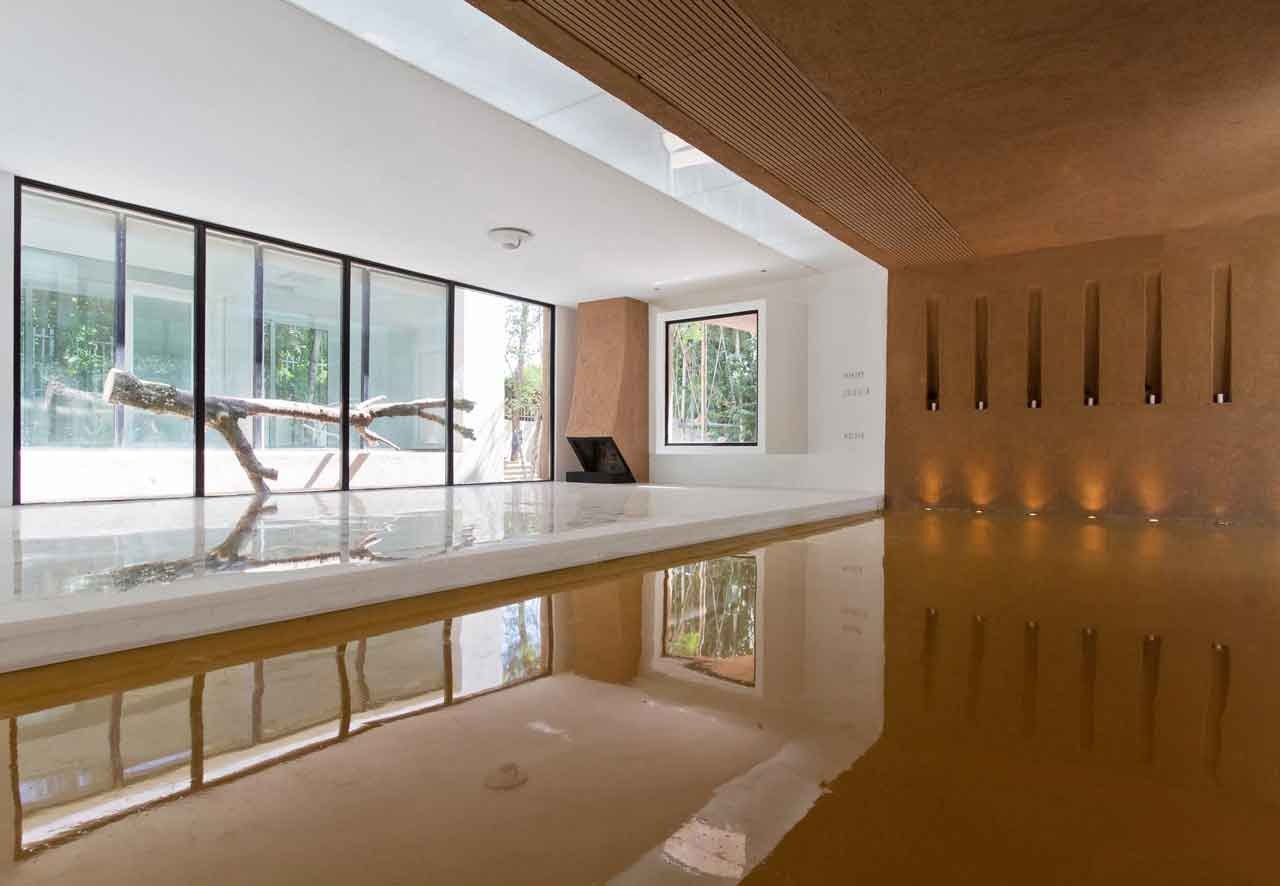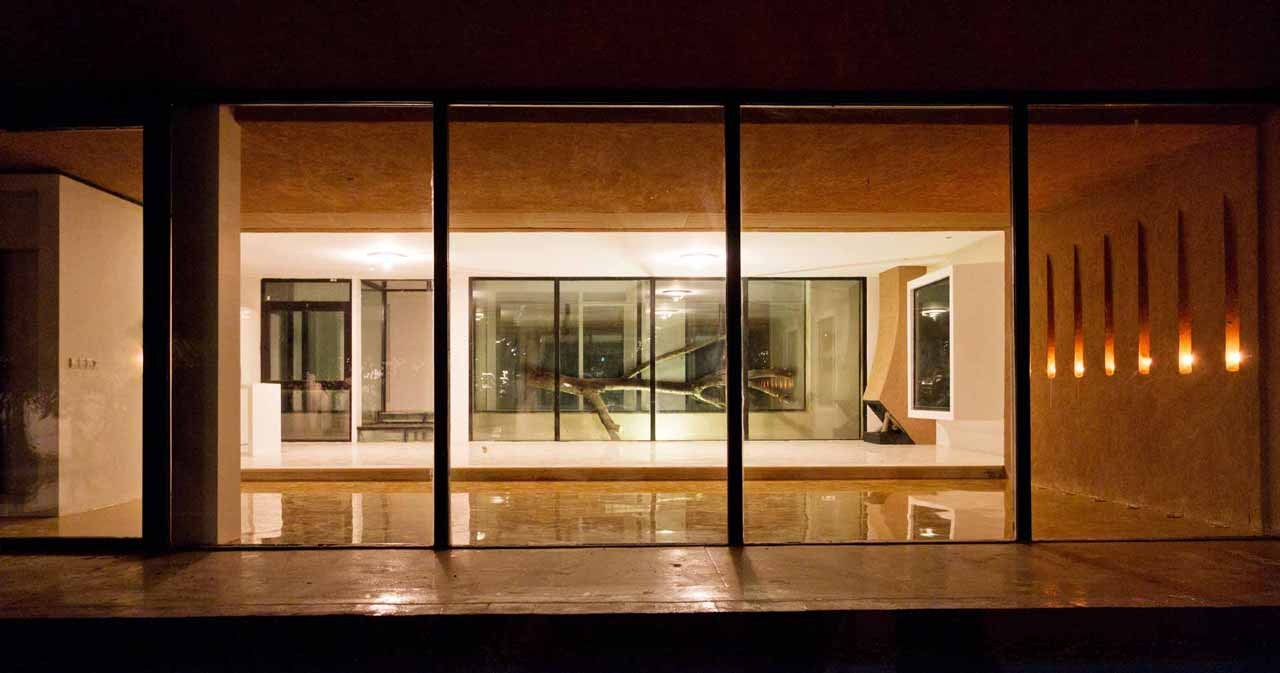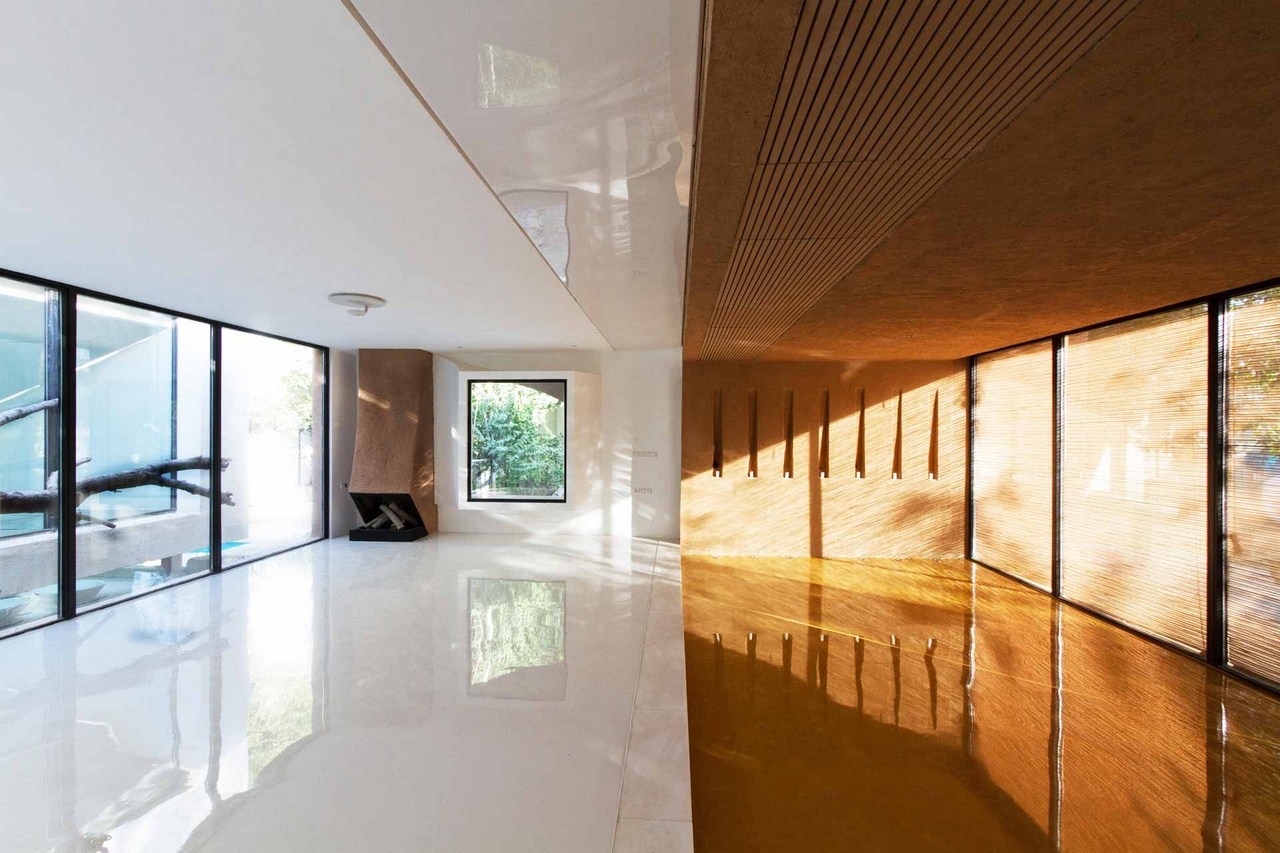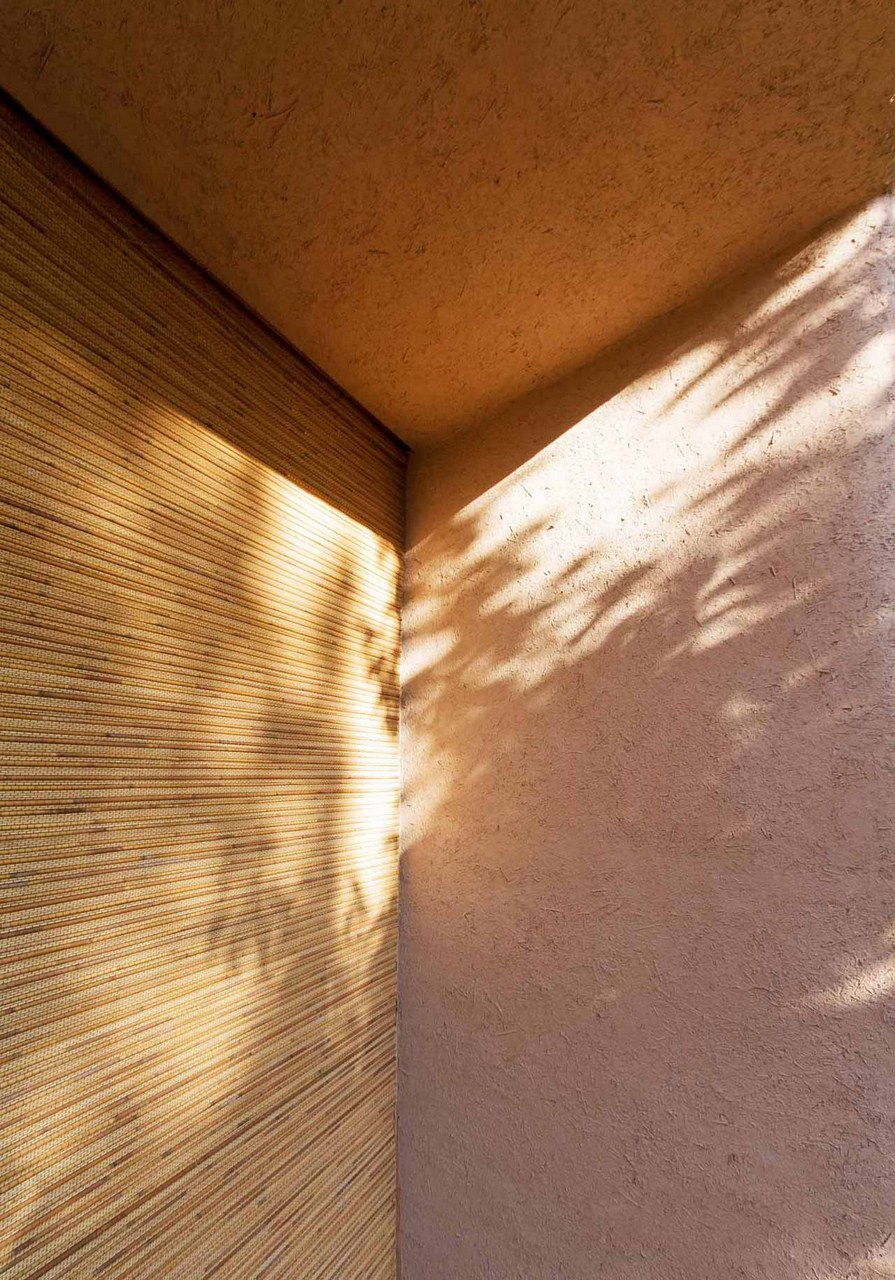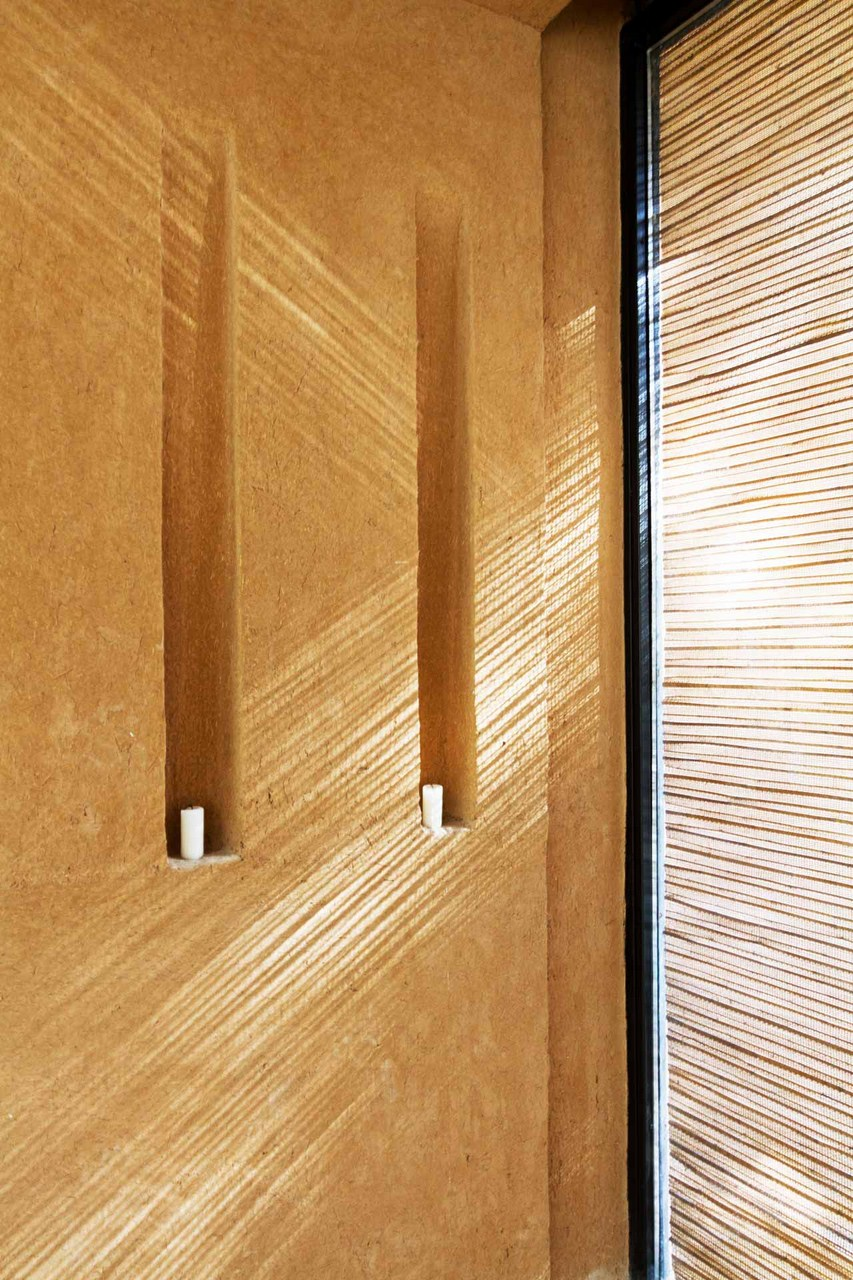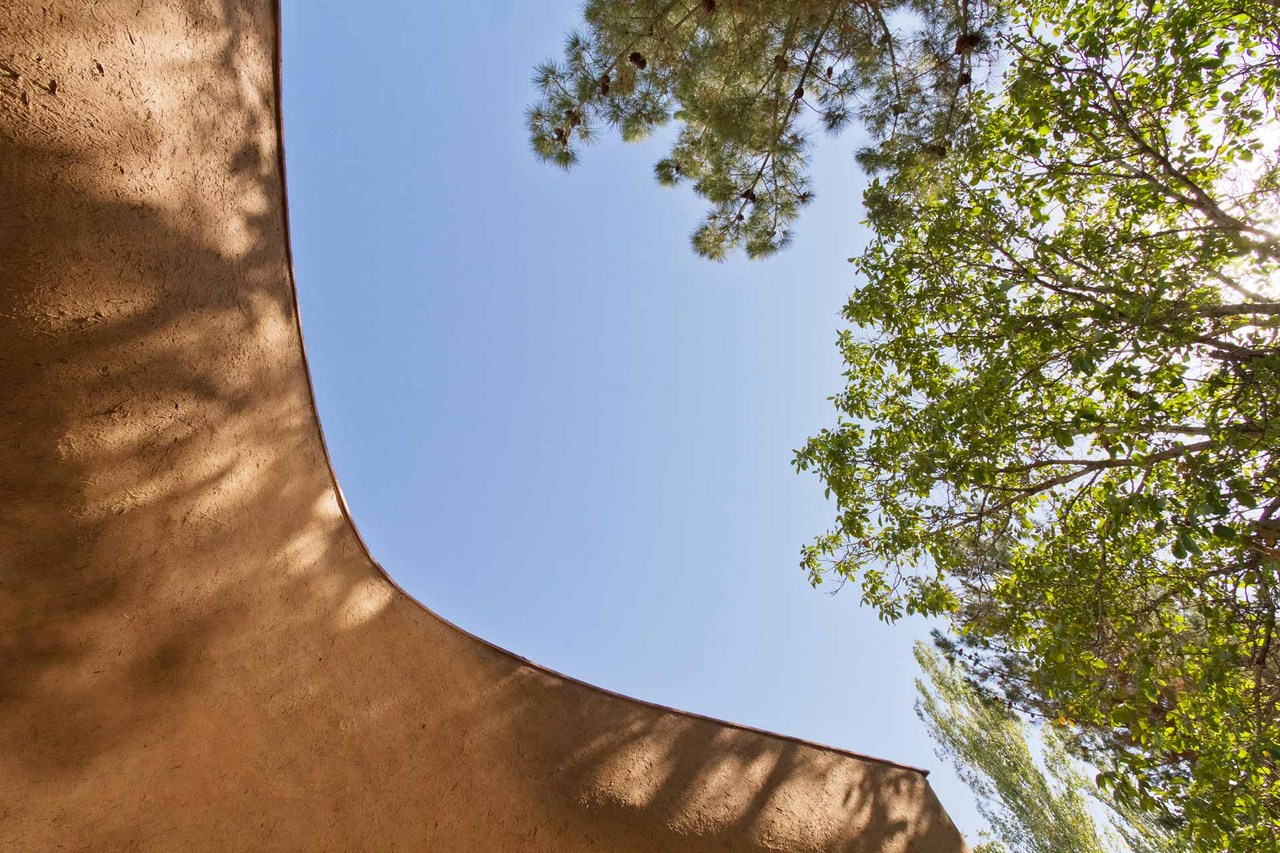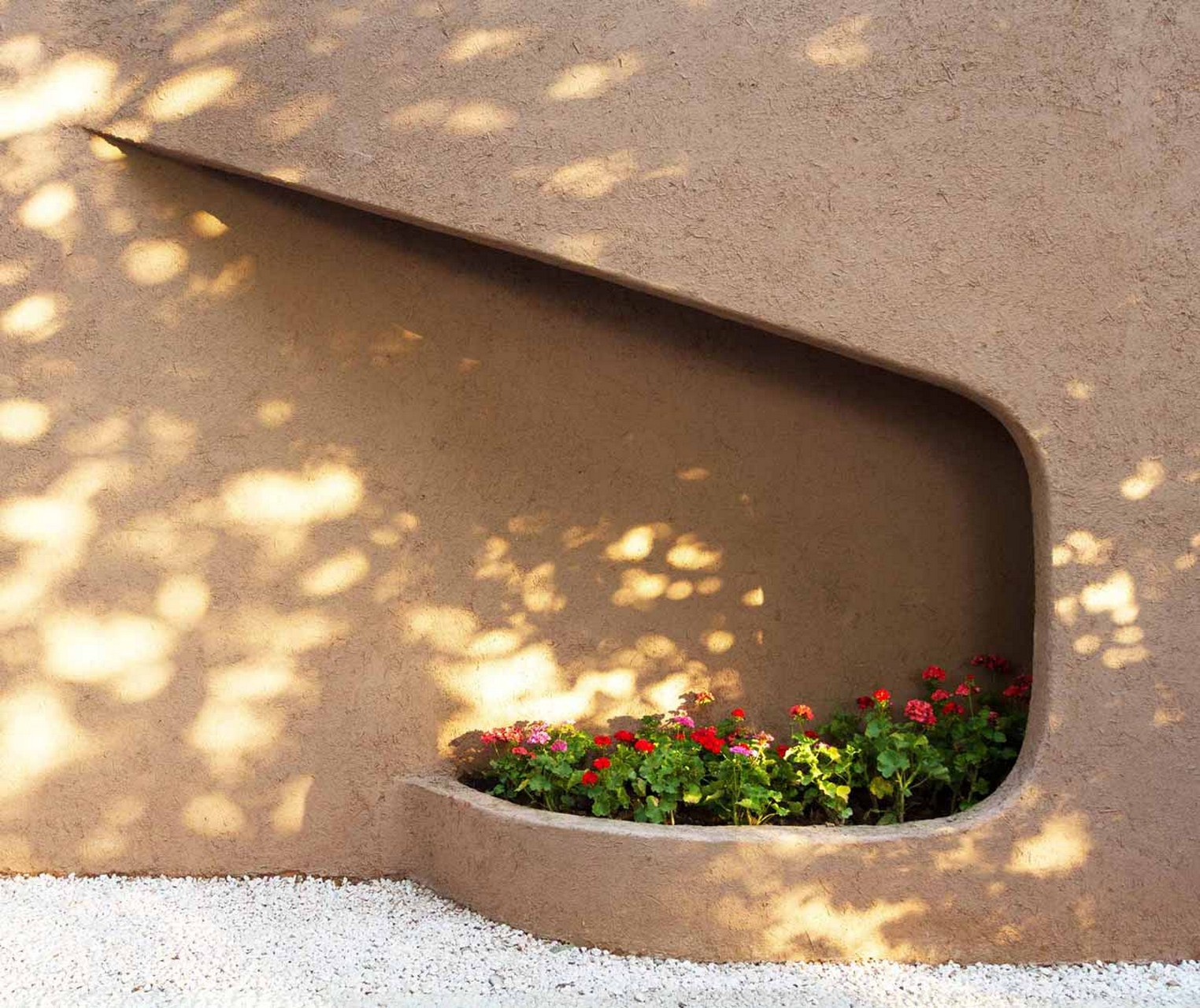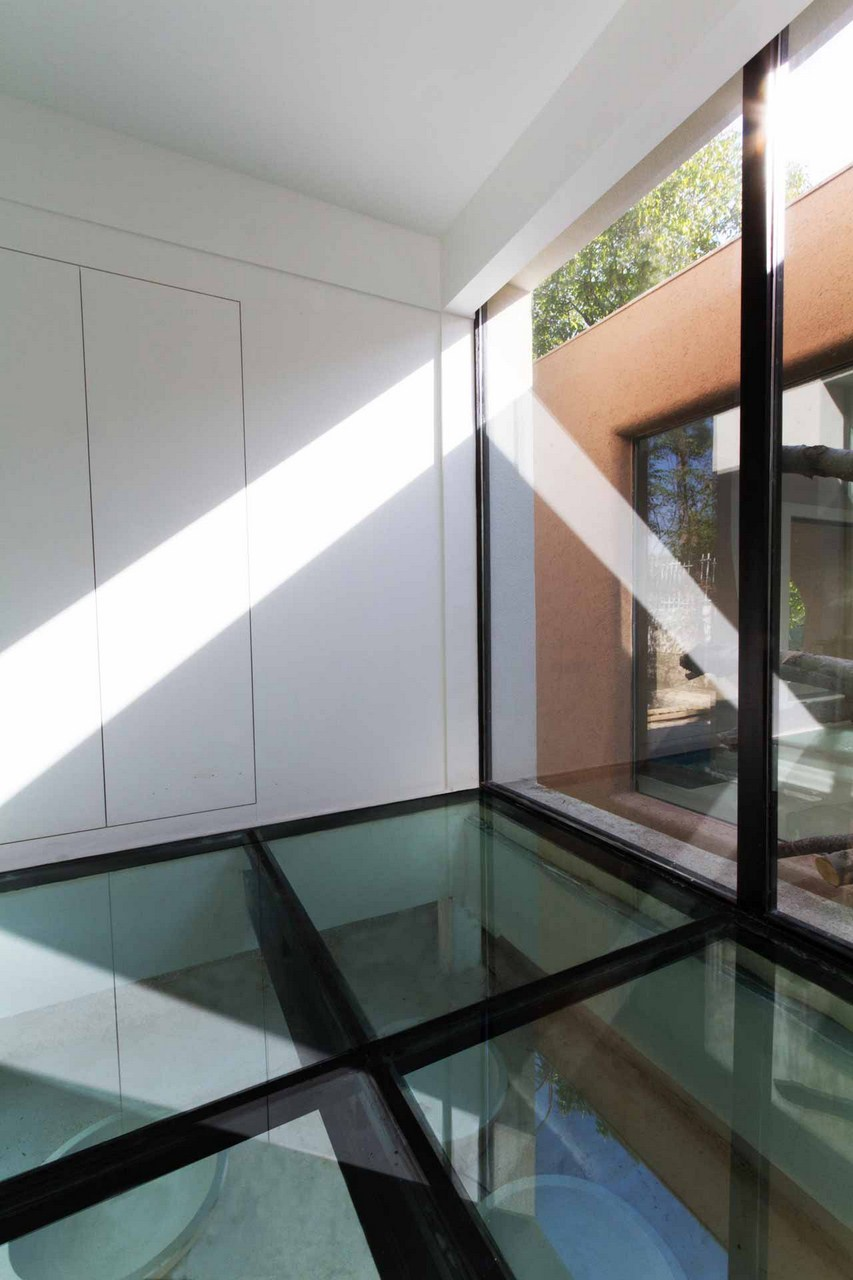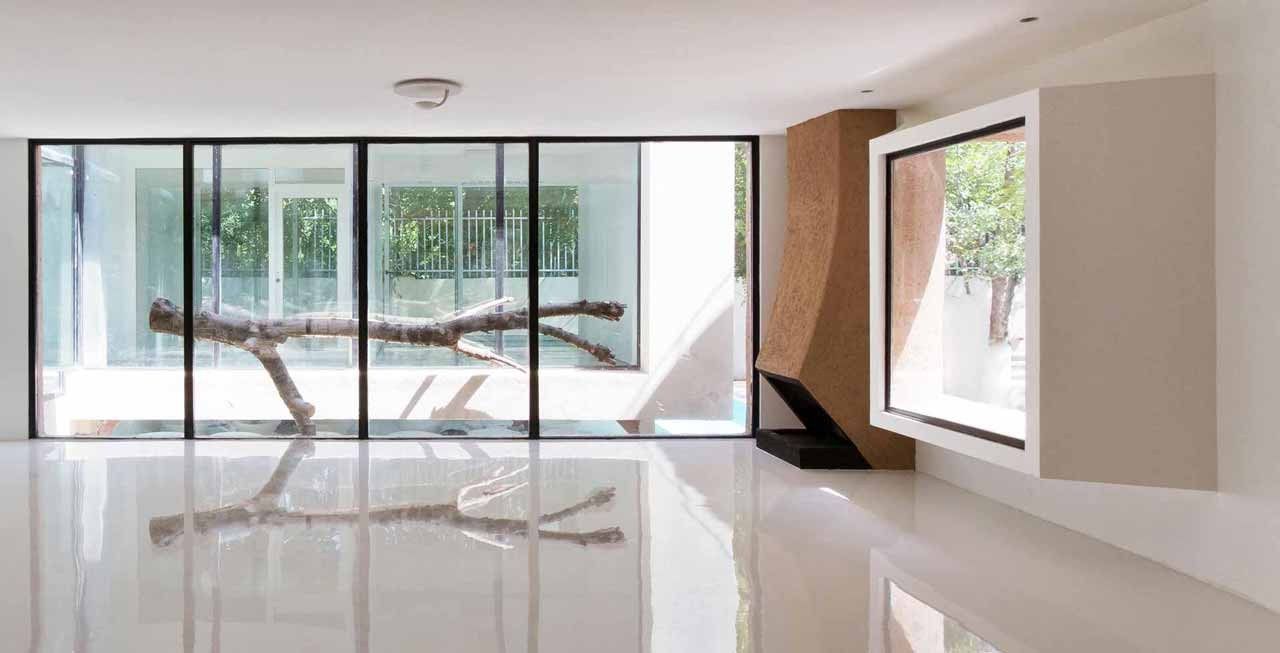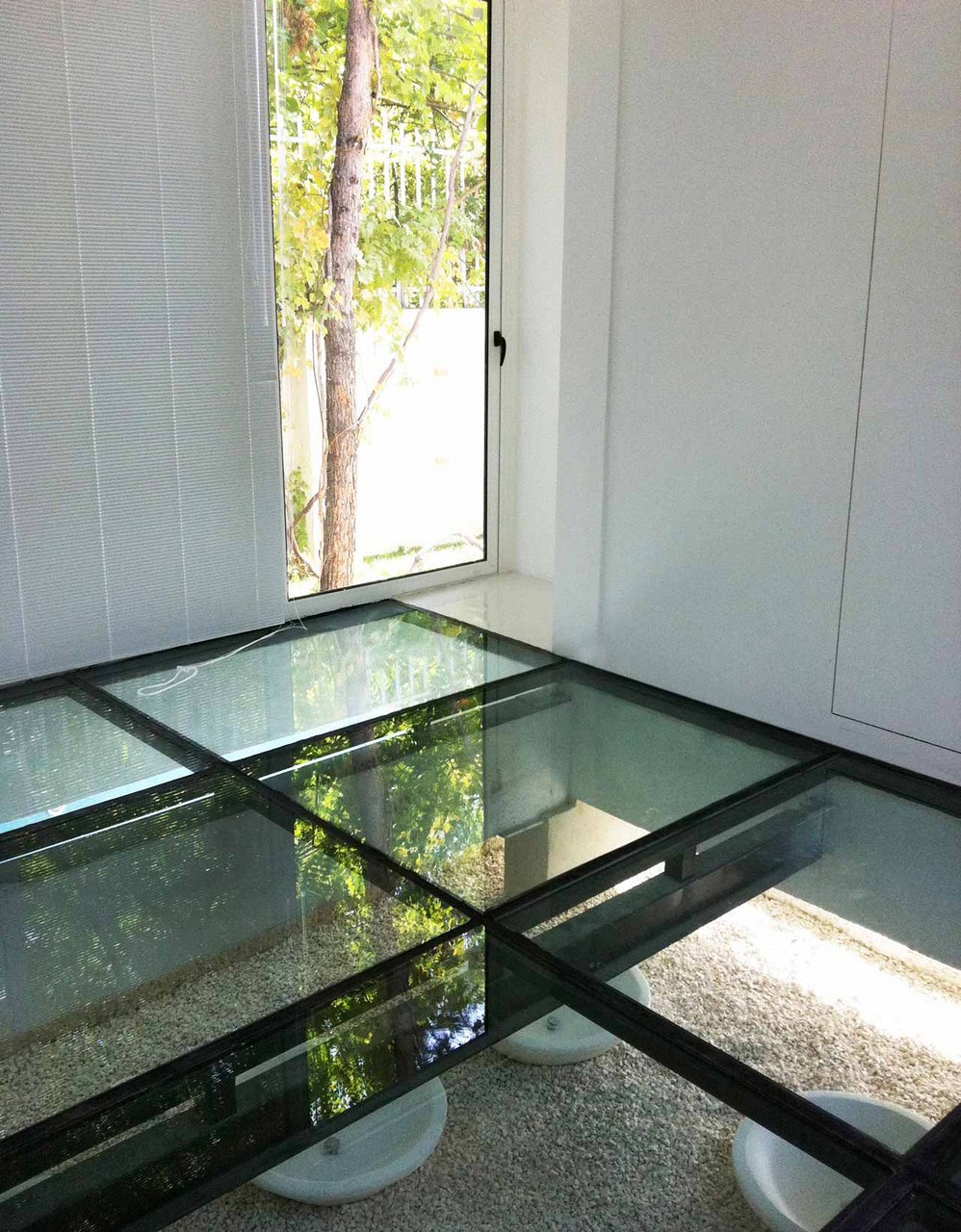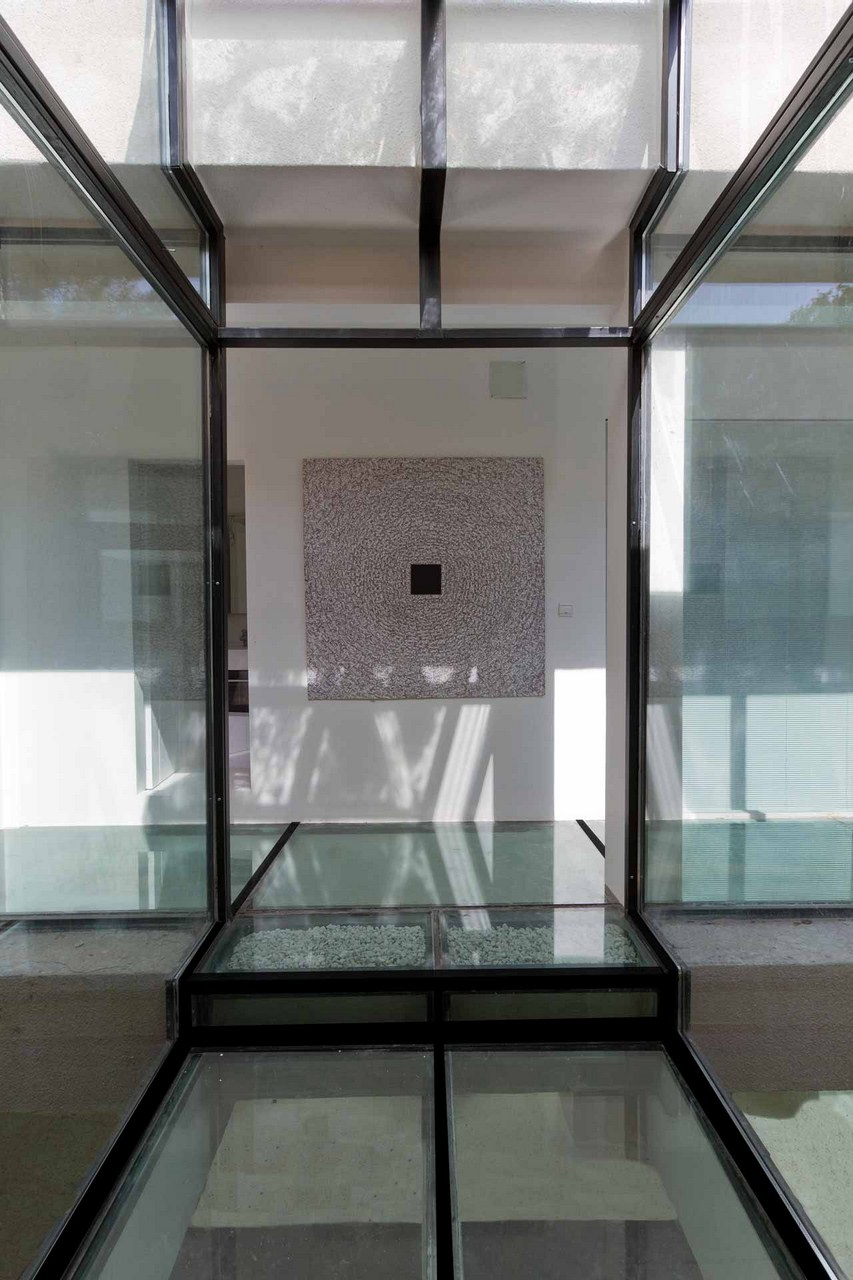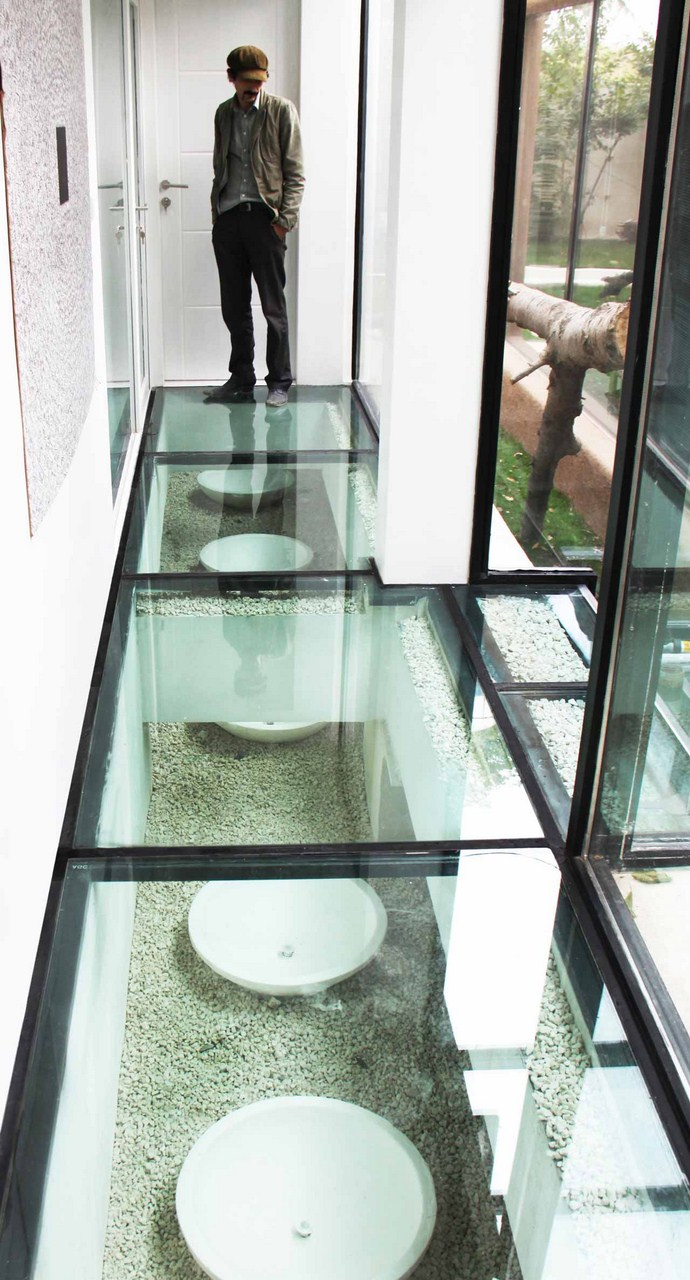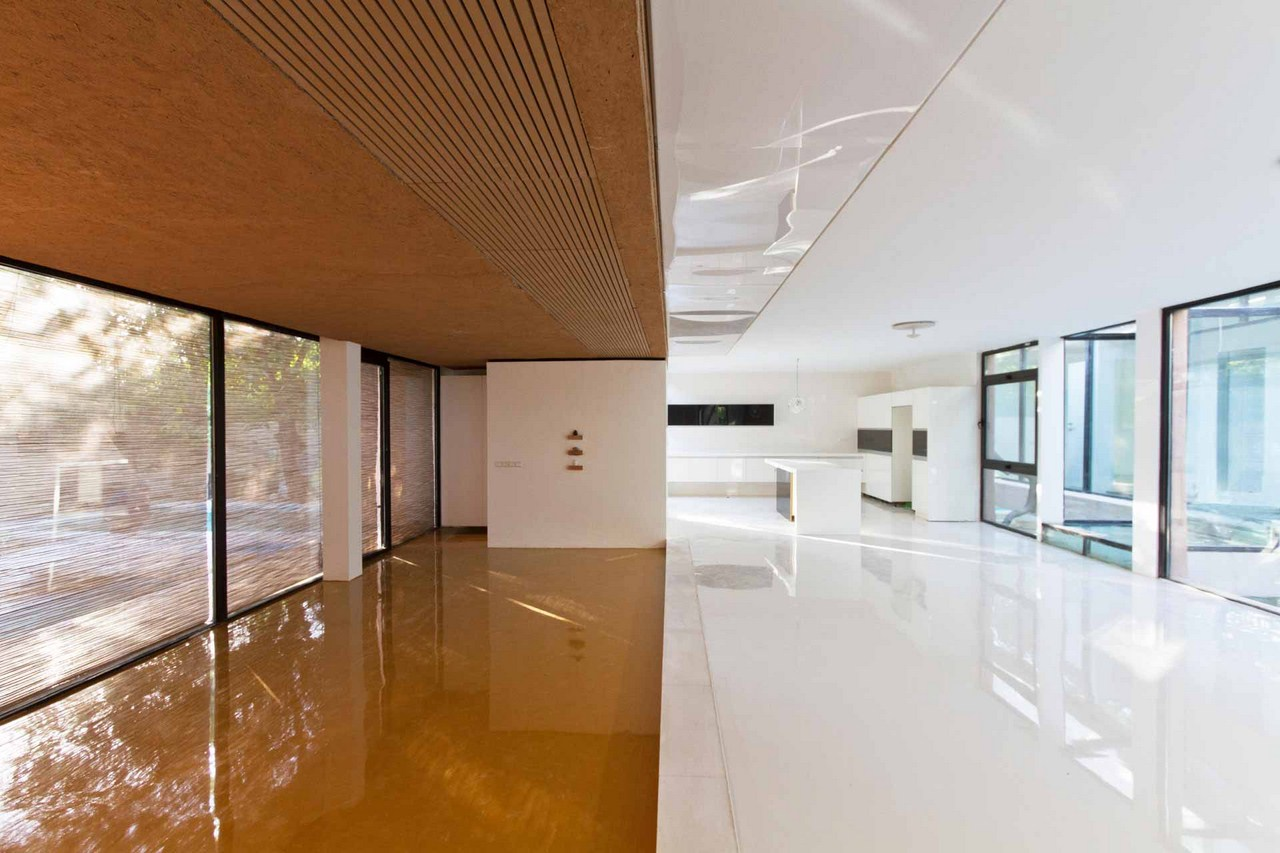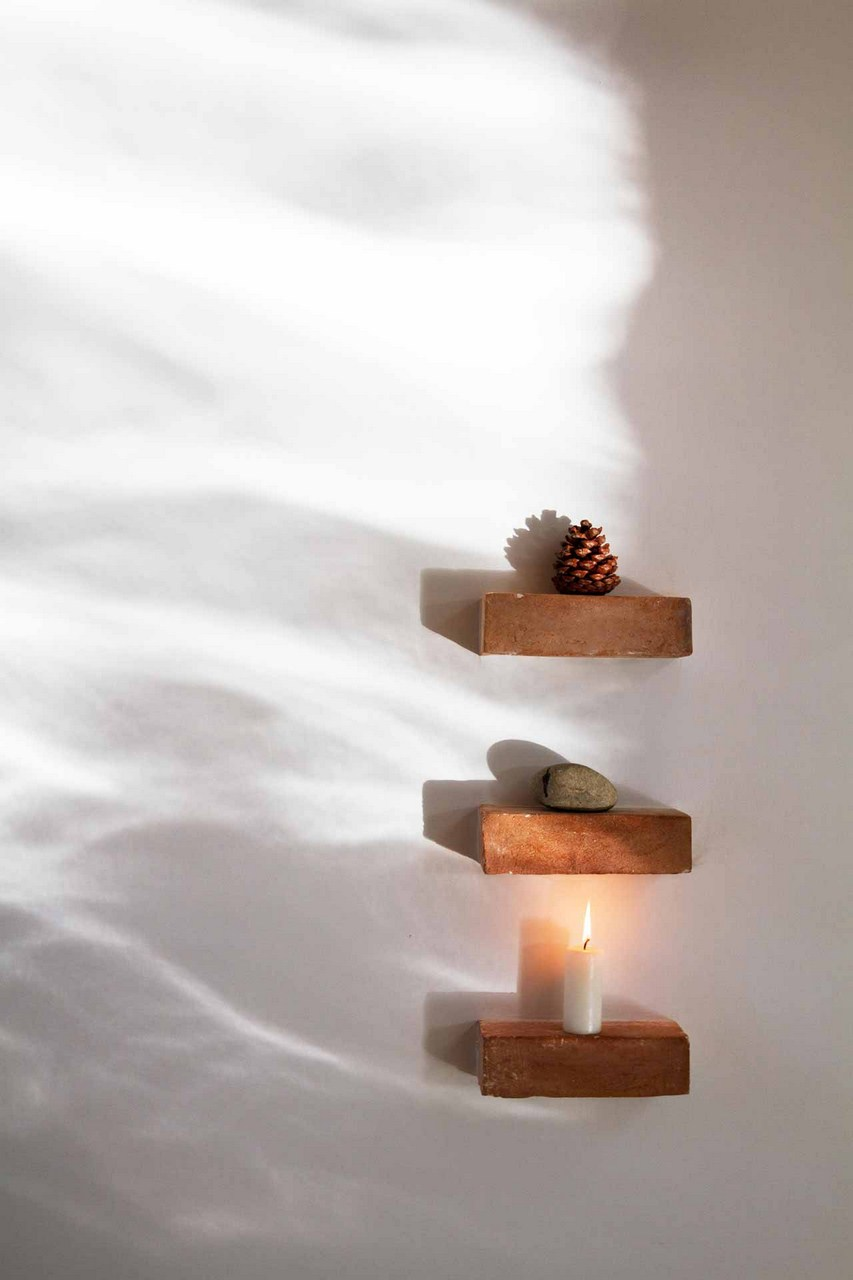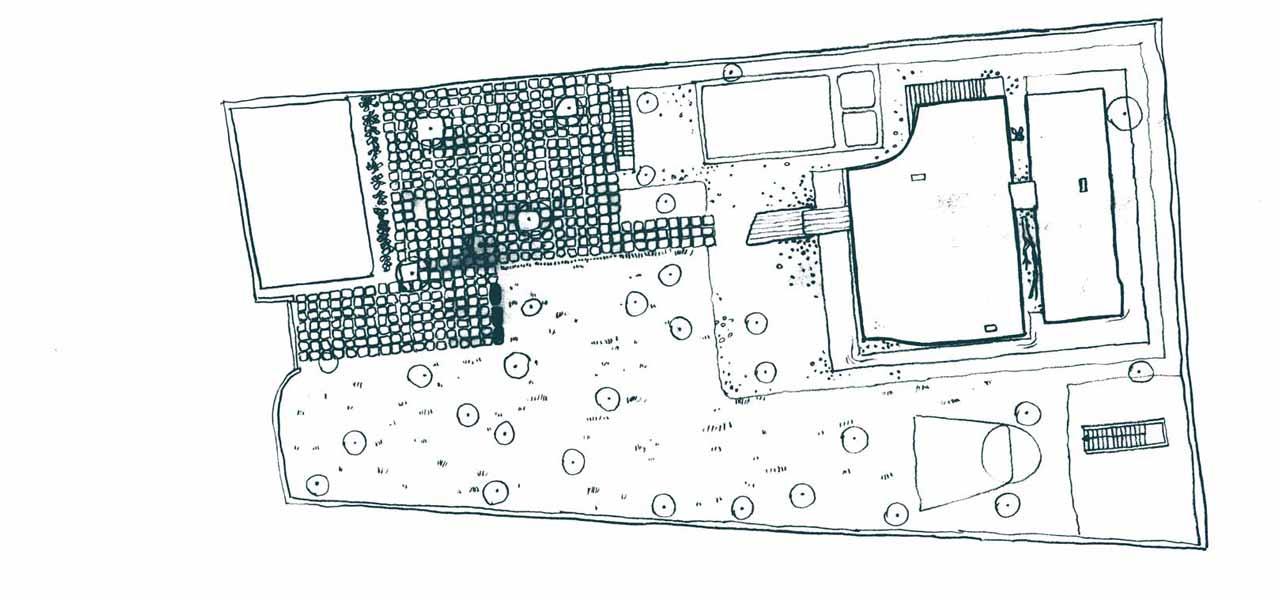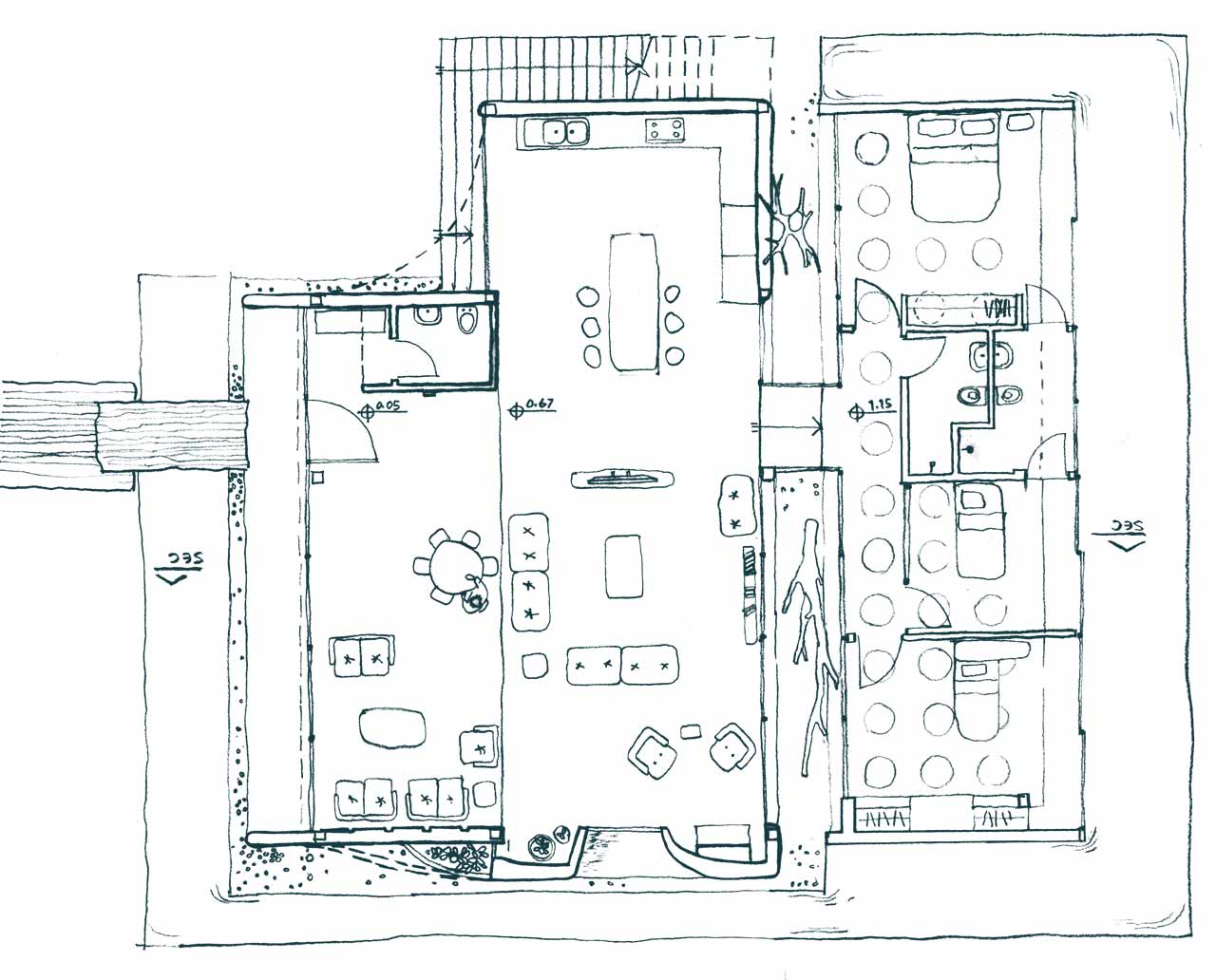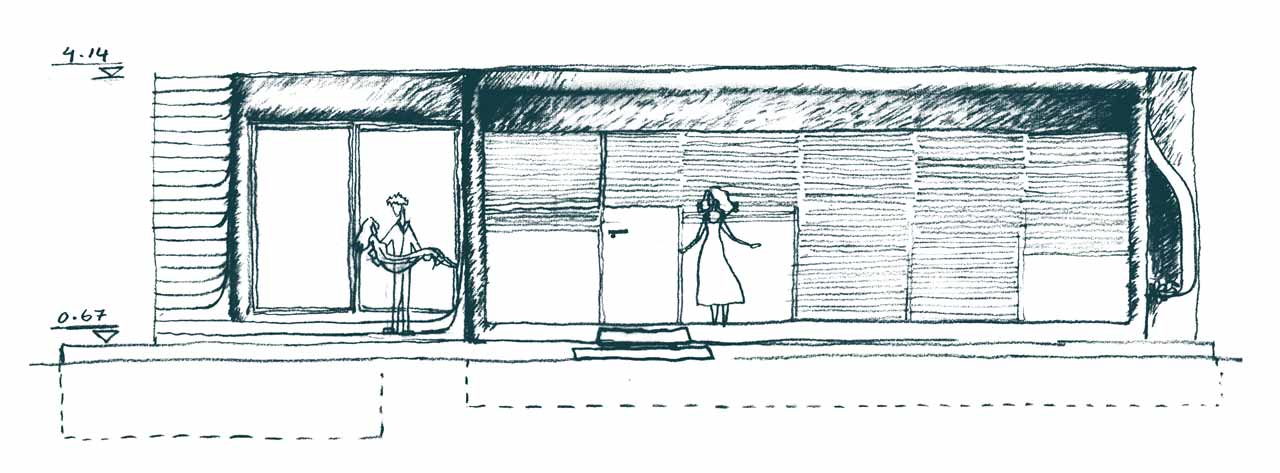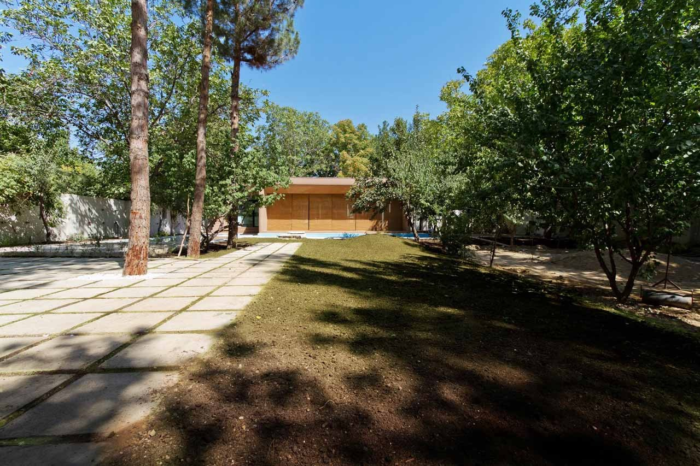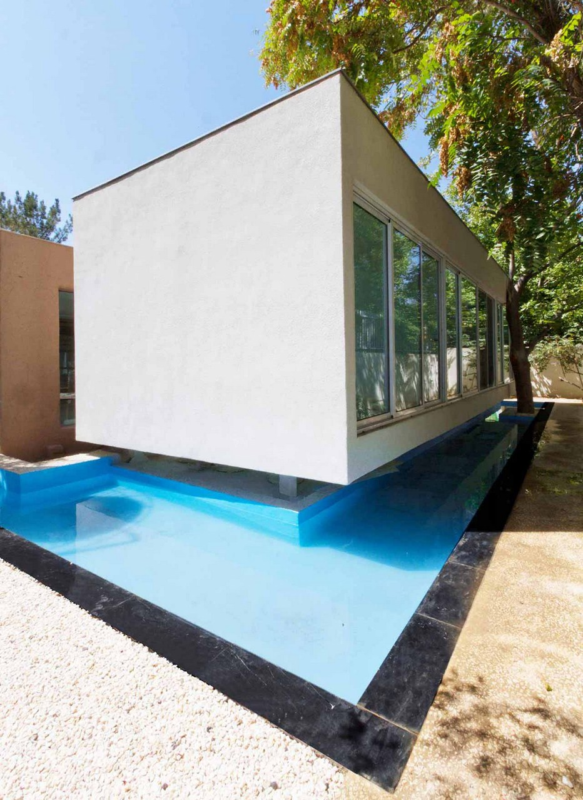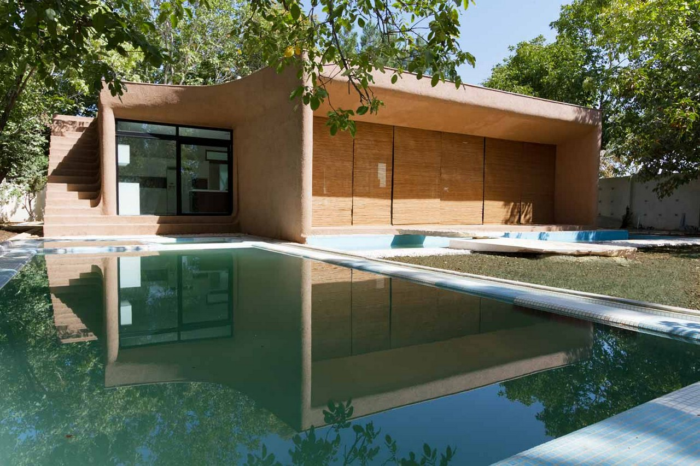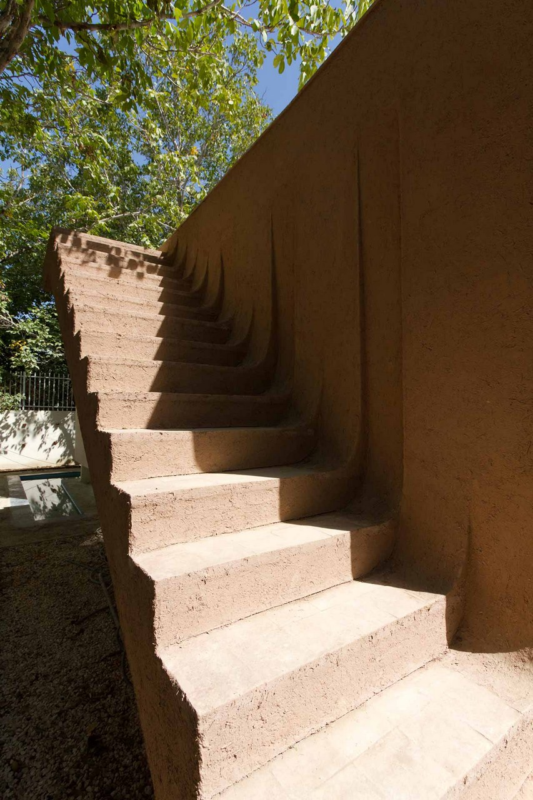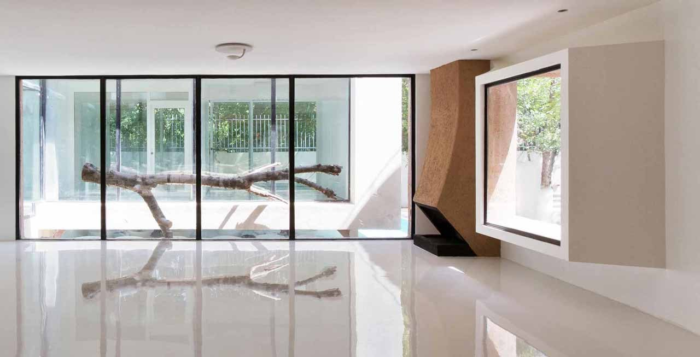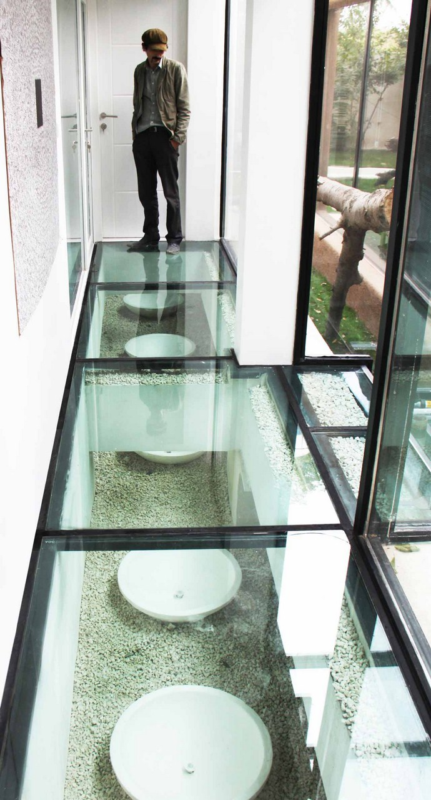Amir Villa
MohammadShahrGardens, where Amir Villa situates, is only a few alleys away from the city of Karaj. Despite urban legislation and building density rules, the distance between gardens and city is gradually shrinking due to the increasing rate of construction works and the wild growth of multi-storey buildings.
Escaping from being trapped by the greedy development of urban constructions, the design strategy followed a path through which the building could keep the former height and scale. Unlike the client’s desire which was a two stories house for locating the bedrooms on the upper level, a one-story building was proposed. Doing so, the private activities would be programmed behind the public area within the same vertical level, in presence of a glass bridge as the means of connecting these two zones.
The summer house was expected to bring peace and calm for elder family members, was at the same time, offer the youth a pleasant place to through their weekend parties. So a bipolar set; as well as other ones – the existing/present state, plastic/right angled surfaces and rough/glossy textures- formed the final proposal for the house structure and form.
By strengthening the structure, the view towards the garden was thoroughly opened. Later, by assessing the existing soil conditions and properties and following a vernacular recipe, clay reinforced by straw, a commonplace and easy-to-apply mixture achieved. The doughy nature of this mixture made it possible to smoother the surfaces and cover up the former unpleasant edges and sharp discontinuities. The overall volume of the former house turned to a new body of integrated surfaces with smooth finishes and unique boundaries having a connected smaller box as the new being of the villa.
Different from the previous state, the new house does not rest on the ground but has been lifting up to open a reasonable space for glass flooring, light bowls and water paths by which the interior spaces were romantically architecture. By which, there is a trace of trembling lights here and there, sentimentally seeping into the sleep hours of residents.
Two old dried tree trunks found somewhere in the garden where taken into account in designing the interior spaces. Trunks were located in the gap between volumes to play a decorative role within the interiors and -maybe- create some pause moments from now on.
Project Info
Architects: NextOffice–Alireza Taghaboni
Location: Karaj, Iran
Architect in Charge: Alireza Taghaboni
Design Team: Rasouli, Masoud Saghi, Farideh Aghamohamadi, Mojtaba Moradi
Structure: Amir Hossein Parvaneh, Vahid Gharekhan Nia
Mechanical: Houfar Esmaili
Electrical: Nina Amoushahi
Area: 1638.0 sqm
Year: 2011
Type: Residential
Photographs: Parham Taghioff
